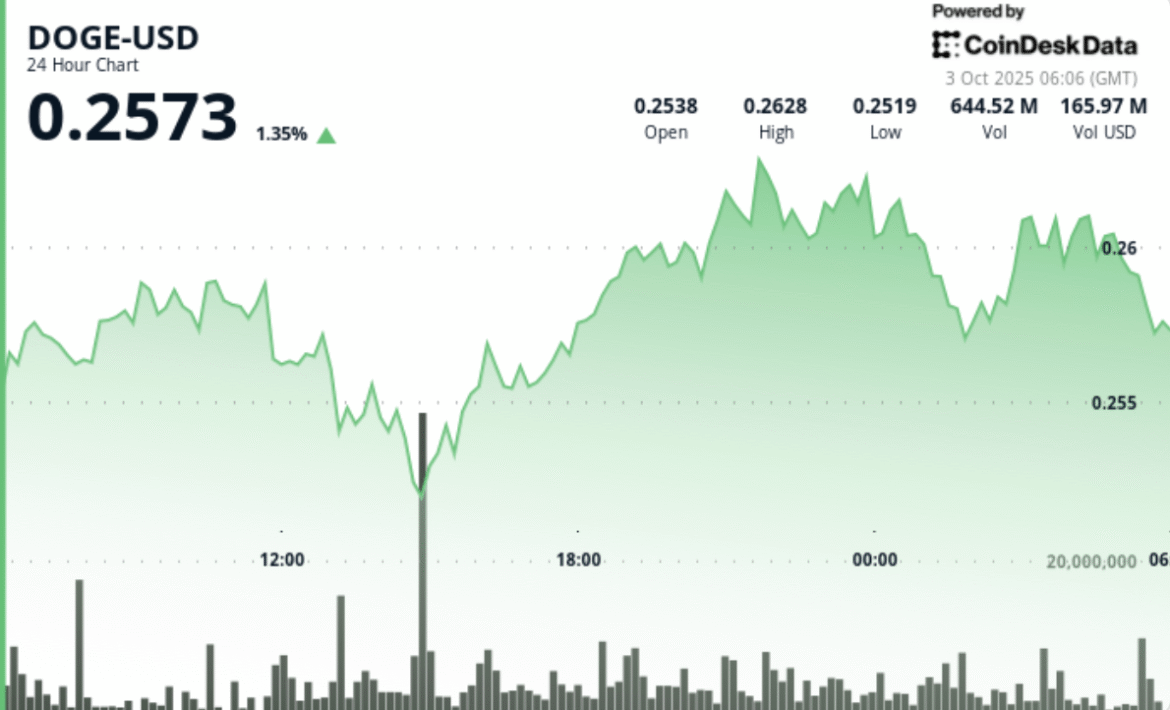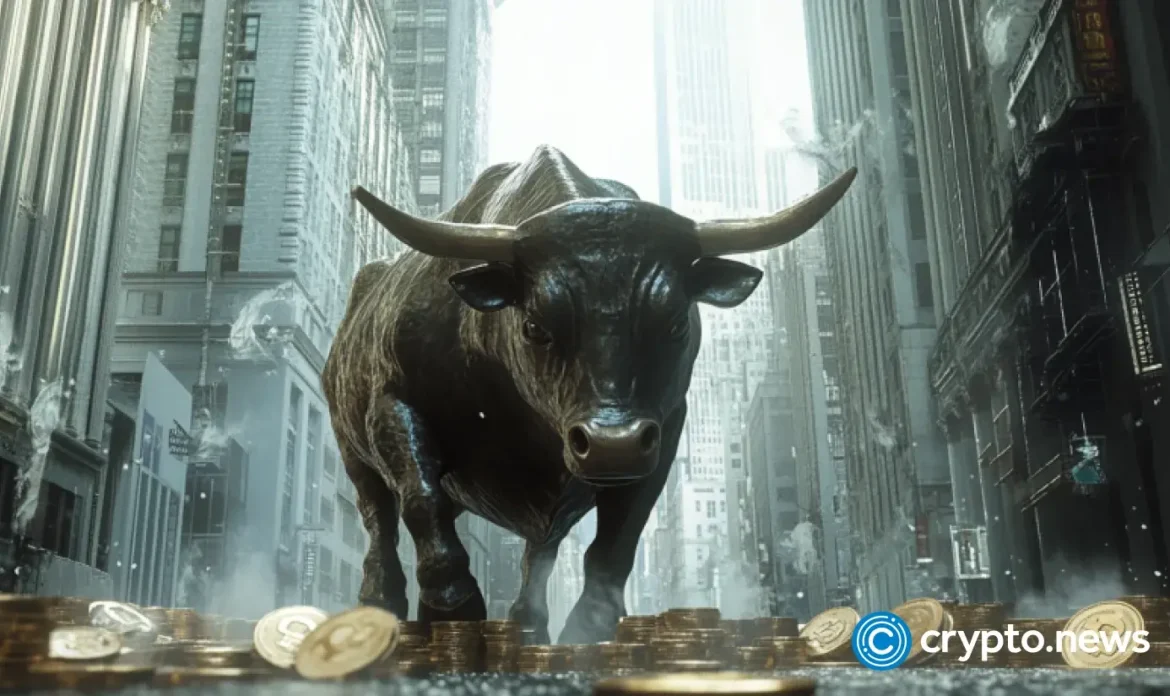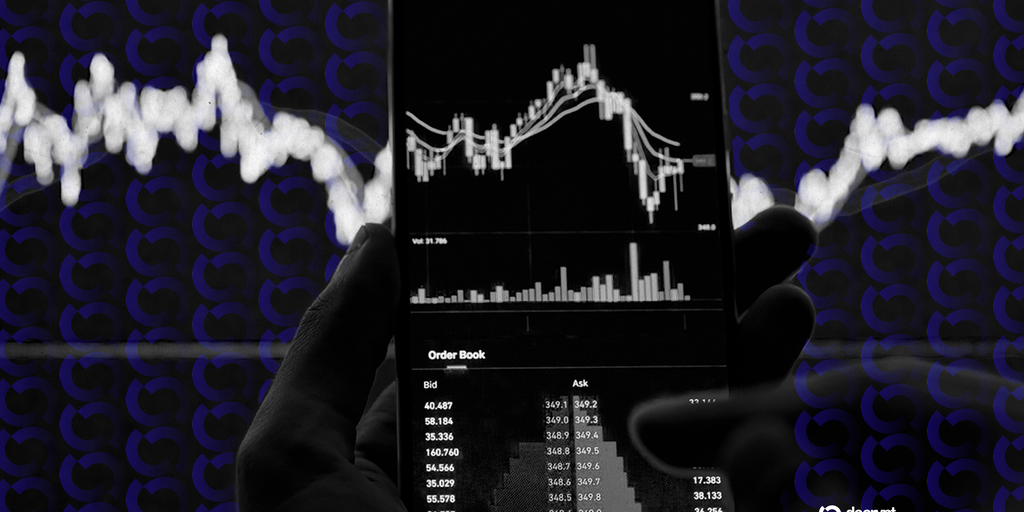Dogecoin swung through a 5% range before fading late, with institutional liquidation flows breaking support in the closing session. A defended $0.251 floor and rebound toward $0.264 showed resilience, but a sharp 33M-volume selloff at 03:55 punctured momentum and left price consolidating near $0.261.
News Background
DOGE traded between $0.251 and $0.264 from Oct. 2, 04:00 to Oct. 3, 03:00, posting a 2.7% net gain after navigating both intraday correction and recovery phases. Analysts pointed to institutional desks as the dominant flow driver, with SBI and ETF speculation keeping broader bid interest intact. Technical specialists highlighted an emerging ascending megaphone pattern and hidden bullish divergence, suggesting potential upside remains despite short-term sell pressure.
Price Action Summary
- DOGE dipped to $0.251 at 14:00 before rebounding to $0.264 by 21:00.
- Selloff volumes peaked at 666M tokens during the downturn; the rebound phase drew 414M.
- Support formed at $0.251–$0.253, while resistance consolidated at $0.262–$0.264.
- In the final hour, DOGE slipped from $0.261 to $0.260 on a 33.1M spike, signaling institutional liquidation.
Technical Analysis
Key support remains anchored at $0.251–$0.253, where buyers repeatedly stepped in. Resistance is firm at $0.262–$0.264, with rejection pressure capping rebounds. The structure shows both resilience and fragility: late-session liquidation prints broke short-term support, yet broader patterns — including an ascending megaphone and bullish divergence on momentum indicators — suggest potential continuation toward $0.34 if buyers reassert above $0.262.
What Traders Are Watching?
- Whether DOGE can stabilize above $0.260 after late-session liquidation.
- A retest of $0.251–$0.253 support if selling persists into U.S. hours.
- Confirmation of bullish divergence and megaphone breakout setups, with upside targets toward $0.34.
- ETF speculation flows that could re-anchor meme-coin bids across DOGE and SHIB.










